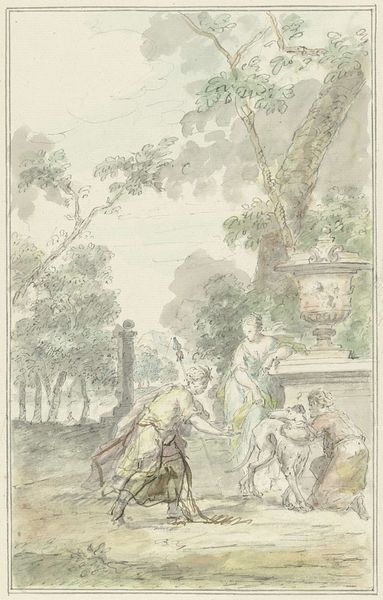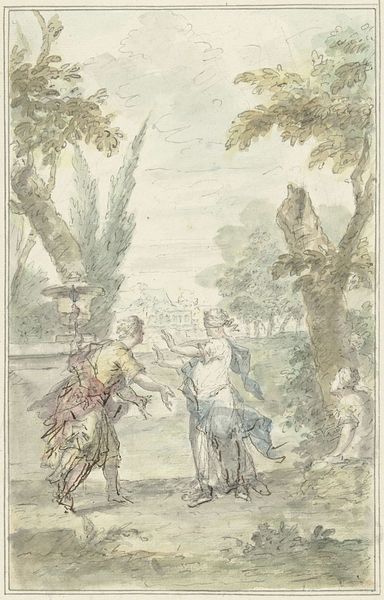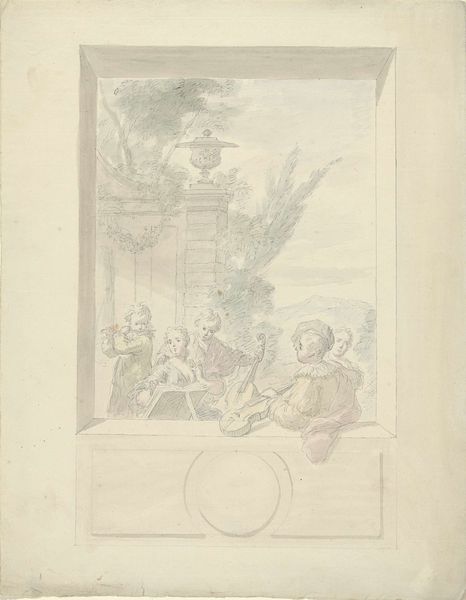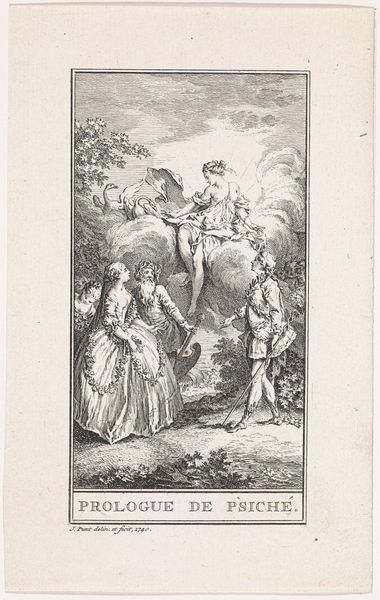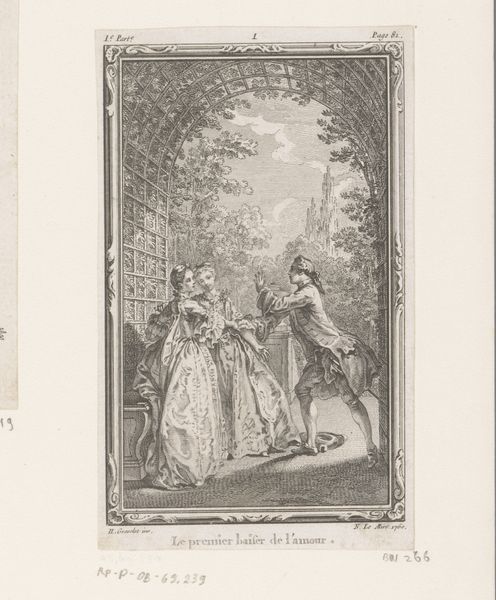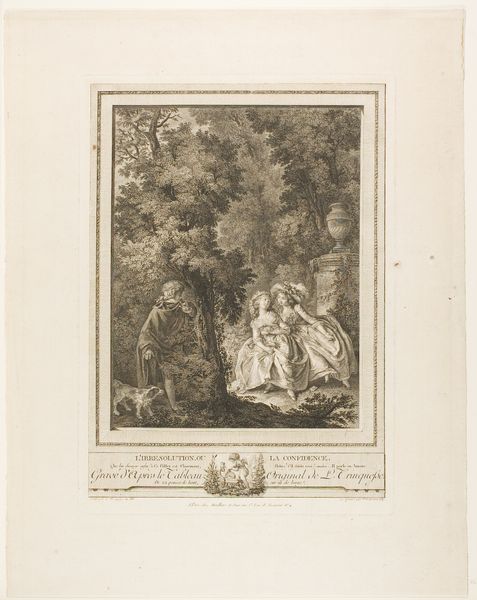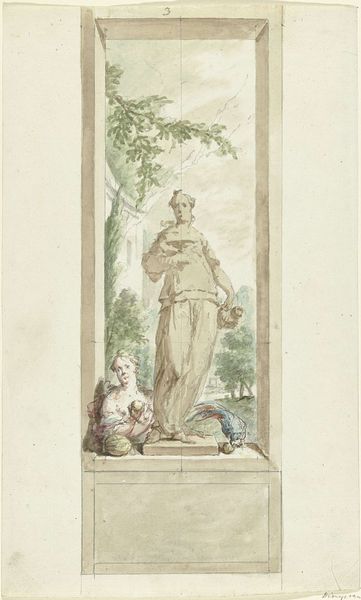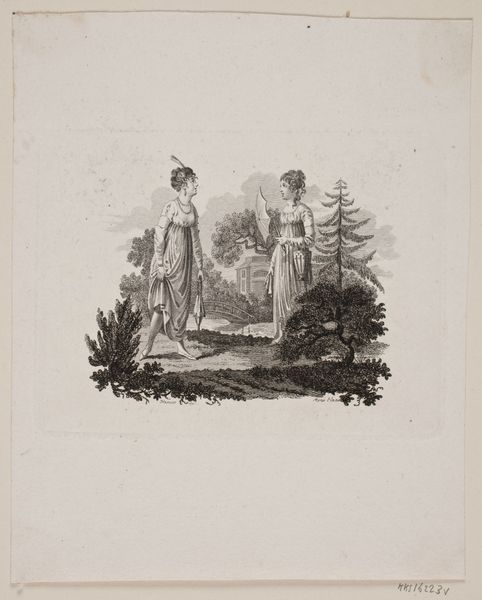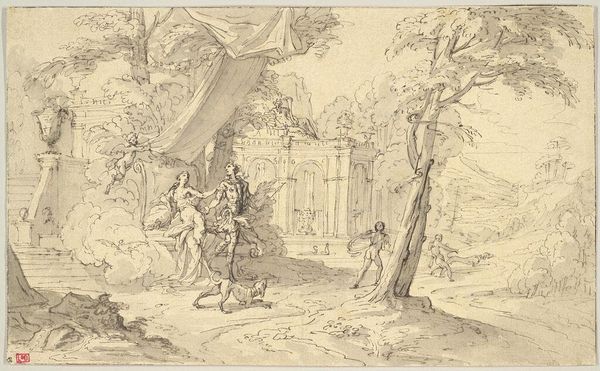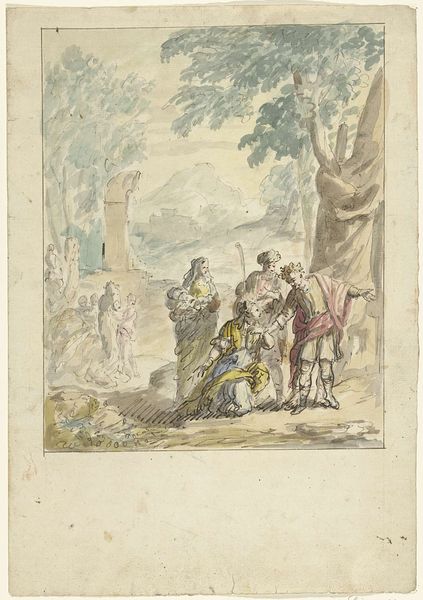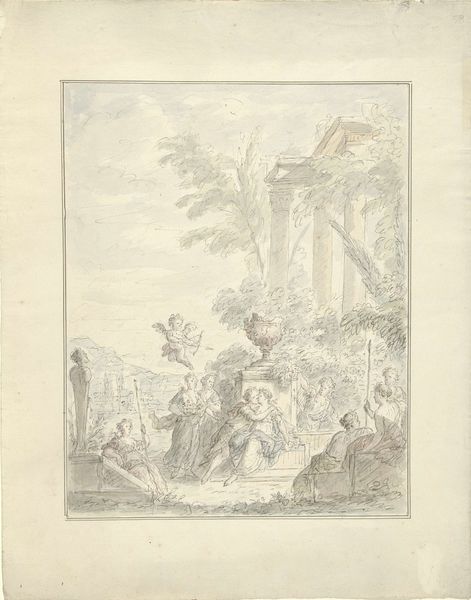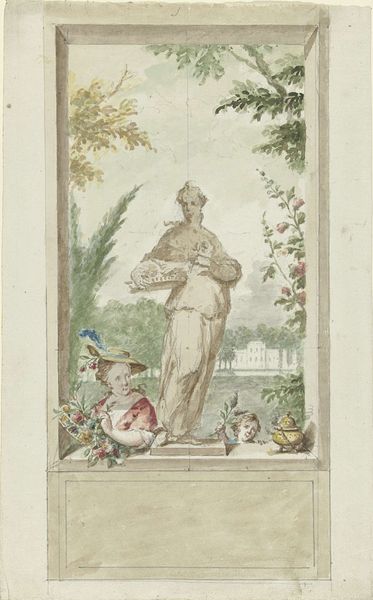
drawing, paper, watercolor, pen
#
drawing
#
landscape
#
figuration
#
paper
#
watercolor
#
pen
#
history-painting
#
rococo
Dimensions: height 389 mm, width 254 mm
Copyright: Rijks Museum: Open Domain
Editor: This is *Design for a wall panel: Amaryllis Recognizes Myrtillo*, a Rococo drawing in pen, watercolor, and paper by Dionys van Nijmegen, sometime between 1715 and 1798. It feels... fragile, like a faded memory. What symbols do you see here? Curator: This is fascinating! Look at the story being told through these figures. The narrative is drawn from classical mythology, of course. Note how van Nijmegen uses the image of recognition to explore identity and disguise. Do you recognize elements that represent idealized love, pastoral landscapes, and the unveiling of true nature? Editor: I think so. The women certainly seem to be revealing something. Is that typical of the era? Curator: Yes. During the Rococo period, mythological scenes were often used to reflect societal values, particularly around courtship and virtue. The landscape isn’t just a pretty background. Ask yourself: how does nature mirror or influence human emotions in this scene? Editor: It does feel very idyllic. The trees, the rolling hills...it gives the figures space to express themselves. So the symbols here tell a story of discovering true identity and the importance of seeing beyond appearances? Curator: Precisely! It's like a dance between the visible and the invisible, reminding us that recognizing truth is often a journey, not a destination. The vase with the statue is a good example of the ideal in statuary versus reality represented by humans. Does understanding the symbols change your initial impression? Editor: Absolutely. It makes the artwork much more meaningful. Before, it was just a pretty drawing; now, it's full of layers of meaning and symbolism. I learned so much!
Comments
No comments
Be the first to comment and join the conversation on the ultimate creative platform.
